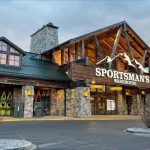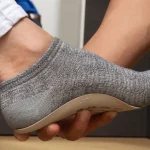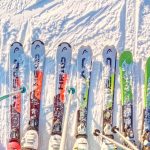Outdoor Research announced its support of Connecting the Gems, a two-person expedition to understand wildlife connectivity and the relationships between people and nature.
Starting July 6, 2010, Deia Schlosberg and Gregg Treinish will trek across, collect data about, and document the ecological connectivity between two largely intact wildlife regions: the Greater Yellowstone Ecosystem in Montana and Wyoming, and the Frank Church River of No Return Wilderness in Idaho.
Outdoor Research is sponsoring the pair, and outdoor enthusiasts can follow the progress via photos, podcasts, and movies of this duo this summer on Outdoor Research's VertiCulture website at www.outdoorresearchverticulture.com.
Schlosberg, 30, and Treinish, 28, are uniquely qualified to mount the Connecting the Gems expedition. The pair was named 2008 National Geographic Adventurers of the Year for “Across the Andes,” the first recorded trek of the 7800-mile spine of the Andes. The Bozeman residents are experienced adventurers and explorers, as their endeavors in the Andes showed.
“This is the last region in the lower 48 States where long-range dispersal and migration routes for animals are possible,” said Treinish, a wildlife biologist who recently completed his Bachelor of Science degree in ecology and evolution from Montana State University in Bozeman, Montana. “The scientific community believes that if populations can dependably migrate between and throughout these vast areas, they will thrive.”
Schlosberg added, “We need to find out what the specific barriers are that prevent movement, and which existing migratory routes are at risk of becoming cut off, causing isolation. Walking the rugged terrain lets us view the route through the eyes of wildlife and observe and document what they face.” Schlosberg is no stranger to trekking through unchartered, uneven terrain, as the first woman to walk the length of South America south of the equator.
“By traveling at the natural human pace of walking, Gregg and Deia hope to gain access and insight to some of the most remote and least understood areas of ecological concern in the continental U.S.,” said Christian Folk, spokesperson for Outdoor Research. “OR is proud to support this human powered expedition that will be instrumental in maintaining the ability of wildlife to move throughout the treasured region.”
Treinish and Schlosberg's journey has already begun, in a sense. The first phase – to research the microcosms of the area – has been underway since November, 2009. Relying on existing information from land managers, ranchers, scientists and government agencies, they have compiled a picture of their likely route across Yellowstone National Park, through Wyoming, Montana, and into Idaho. Their research – which pinpoints barriers to wildlife movement such as bottlenecks, detours, conflict zones, development, and roads, as well as known migration corridors – will continue until their departure July 6, 2010.
Once underway, Treinish and Schlosberg will gather demographic data about the animals inhabiting and migrating along the route of travel. Fur and scat samples will be collected for DNA analysis that can link existing and future data about individual animals and groups of animals. Observations of footprints, claw marks, and scat will confirm the presence of animals. Remote-triggered camera traps may be used to catch imagery and identify individual animals. All data gathered will be tied to GPS locations. All findings will be compiled and shared through a film and a comprehensive report.
“Their ability to move and migrate is key to a stronger, healthier genetic pool. So here, if we can connect the gems, we can give grizzlies, wolves, wolverines, and other carnivores the best chance for long term survival,” said Treinish.















